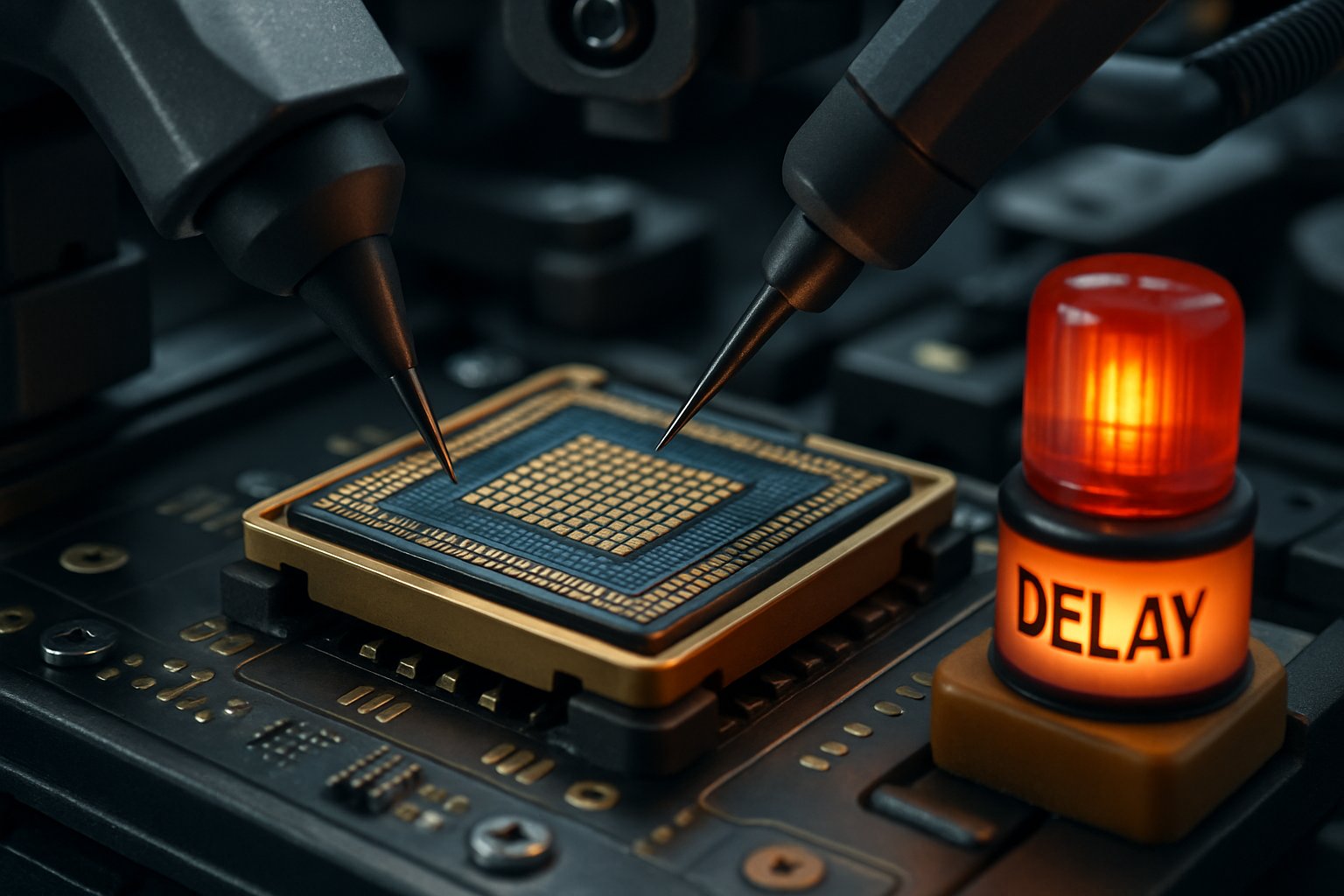
AI CERTs
14 hours ago
AI Supply Chain Strain: Chips and Packaging Bottlenecks
Chipmakers posted record sales in 2024. However, soaring AI demand has exposed new cracks in supply chains. Analysts call the phenomenon AI Supply Chain Strain. Foundries add wafer lines, yet servers still wait for finished modules. Consequently, advanced packaging and stacked memory now determine delivery schedules. Industries from cloud to automotive feel the knock-on shocks. Meanwhile, policymakers funnel billions into domestic plants to blunt future shortages. This report unpacks the data, quotes, and forecasts driving the debate. Furthermore, it details where hardware bottlenecks hurt manufacturers most. Readers will also learn why some experts fear a widening compute crisis. Finally, we outline certifications that help professionals navigate turbulent procurement landscapes. The stakes grow daily as AI ambitions outpace component pipelines worldwide.
Record Semiconductor Sales Surge
Global semiconductor sales reached $627.6 billion in 2024, according to SIA. Moreover, SIA forecasts double-digit expansion through 2025. Ajit Manocha of SEMI adds that AI processing fuels the capacity race.

These figures appear impressive yet mask emerging constraints. Therefore, the headline growth hides the second-order effects of AI Supply Chain Strain.
Foundries plan 6% capacity growth this year and 7% next year. In contrast, back-end expansion lags even optimistic wafer forecasts. Consequently, volume alone cannot guarantee timely GPU shipments.
Record revenue signals robust demand. However, bottlenecks already erode that momentum.
Advanced packaging explains much of this tension.
Advanced Packaging Capacity Bottleneck
TSMC, ASE, and Amkor control most advanced CoWoS lines today. Mark Liu admits packaging, not wafer output, limits AI GPU volumes. Subsequently, hyperscalers pre-booked capacity up to eighteen months ahead.
SEMI reports packaging equipment sales jumped 20% in 2024. Nevertheless, builds require long lead times for tools and substrates. Therefore, many wafers sit idle while waiting for interposers and HBM stacks.
This mismatch exemplifies AI Supply Chain Strain across data-centre projects. Furthermore, small startups lack leverage to secure scarce slots.
Packaging stalls now define hardware bottlenecks more than lithography. Consequently, attention shifts downstream in the value chain.
HBM availability is the parallel pressure point.
HBM Supply Remains Tight
HBM bit demand surged nearly 200% during 2024, TrendForce data shows. SK Hynix, Samsung, and Micron have already sold out near-term lots.
Moreover, memory makers prioritize HBM over standard DRAM because margins soar. Consequently, server builders confront higher costs and elongated delivery windows.
Nvidia executives warn that HBM scarcity prolongs the compute crisis for multiple quarters. Meanwhile, blacklisted Chinese buyers scramble to source alternative SKUs.
Tight HBM amplifies AI Supply Chain Strain effects. However, mature node shortages deliver different headaches.
Let's examine that older technology gap next.
Mature Node Vulnerabilities Persist
Automotive PMICs and MCUs still run on 40-180nm processes. Reuters cites automakers warning of new disruptions after a Nexperia dispute.
In contrast, foundries funnel resources toward leading-edge AI silicon. Therefore, mature lines struggle to receive capital upgrades. Subsequently, inventory cushions shrink, exposing production schedules to single-supplier shocks.
These hardware bottlenecks differ from packaging but converge in impact. Consequently, factories idle when one simple controller is missing.
Legacy chips remain mission critical. Nevertheless, policy debates often overlook them.
Geopolitics further complicates allocation decisions.
Geopolitics Rewrites Demand Map
US export controls now restrict certain high-end AI GPUs to China. Furthermore, suppliers carry stranded inventory of region-specific boards.
Nvidia recorded write-downs on H20 units after rule changes. Consequently, procurement teams must redirect parts to licensed markets.
Additionally, national security programs subsidize domestic fabs and packaging plants. The CHIPS Act recently awarded funds to Amkor for US advanced packaging.
Geopolitical shifts intensify AI Supply Chain Strain unpredictability. However, increased investment offers eventual relief.
Funding trends deserve closer scrutiny.
Investment Aims At Relief
Foundries expect capacity to grow seven percent in 2025. Moreover, SEMI projects equipment sales reaching $125.5 billion that year.
Back-end vendors plan new lines in the United States, Japan, and Europe. Consequently, lead times should compress once these plants start shipping.
However, ASML tool backlogs and substrate shortages may drag timelines. Meanwhile, training programs attempt to enlarge the skilled workforce.
- TSMC expanding CoWoS capacity by 80% within 18 months.
- HBM suppliers adding three new fabs by late 2026.
- CHIPS funding earmarks $8.5B for domestic packaging.
- Automotive groups securing multi-year mature node contracts.
Professionals can enhance expertise with the AI + Supply Chain Certification.
Investment momentum counters AI Supply Chain Strain gradually. Nevertheless, strategic planning remains essential during the computer crisis.
The next section distills key insights.
Strategic Takeaways And Outlook
Global demand will keep stretching resources through 2026. Moreover, AI Supply Chain Strain will persist until packaging and HBM catch up.
Stakeholders should diversify suppliers, lock long-term contracts, and monitor policy risks. Consequently, resilience improves against sudden shocks.
Nevertheless, executives see opportunity as investments multiply. AI Supply Chain Strain also spurs policy makers to incentivize local ecosystems. Meanwhile, deeper collaboration could ease AI Supply Chain Strain by synchronizing wafer and back-end ramps. Finally, upskilling through certifications helps teams navigate AI Supply Chain Strain during the compute crisis. Explore the linked certification to future-proof your supply-chain strategy.



